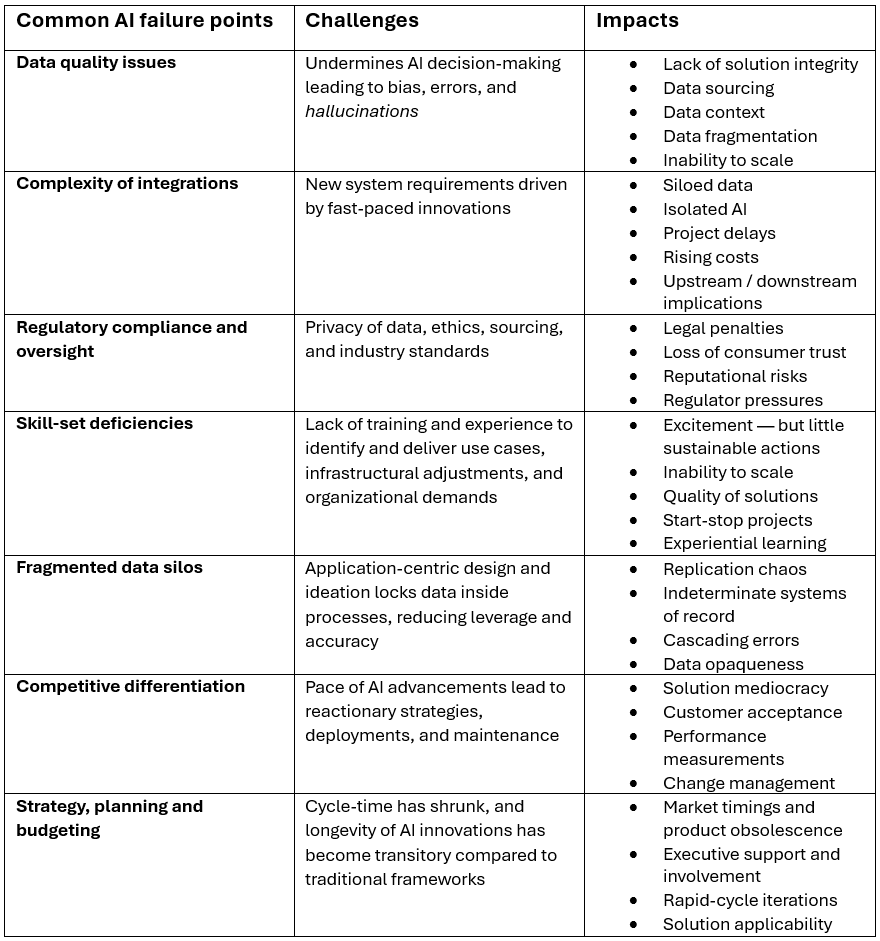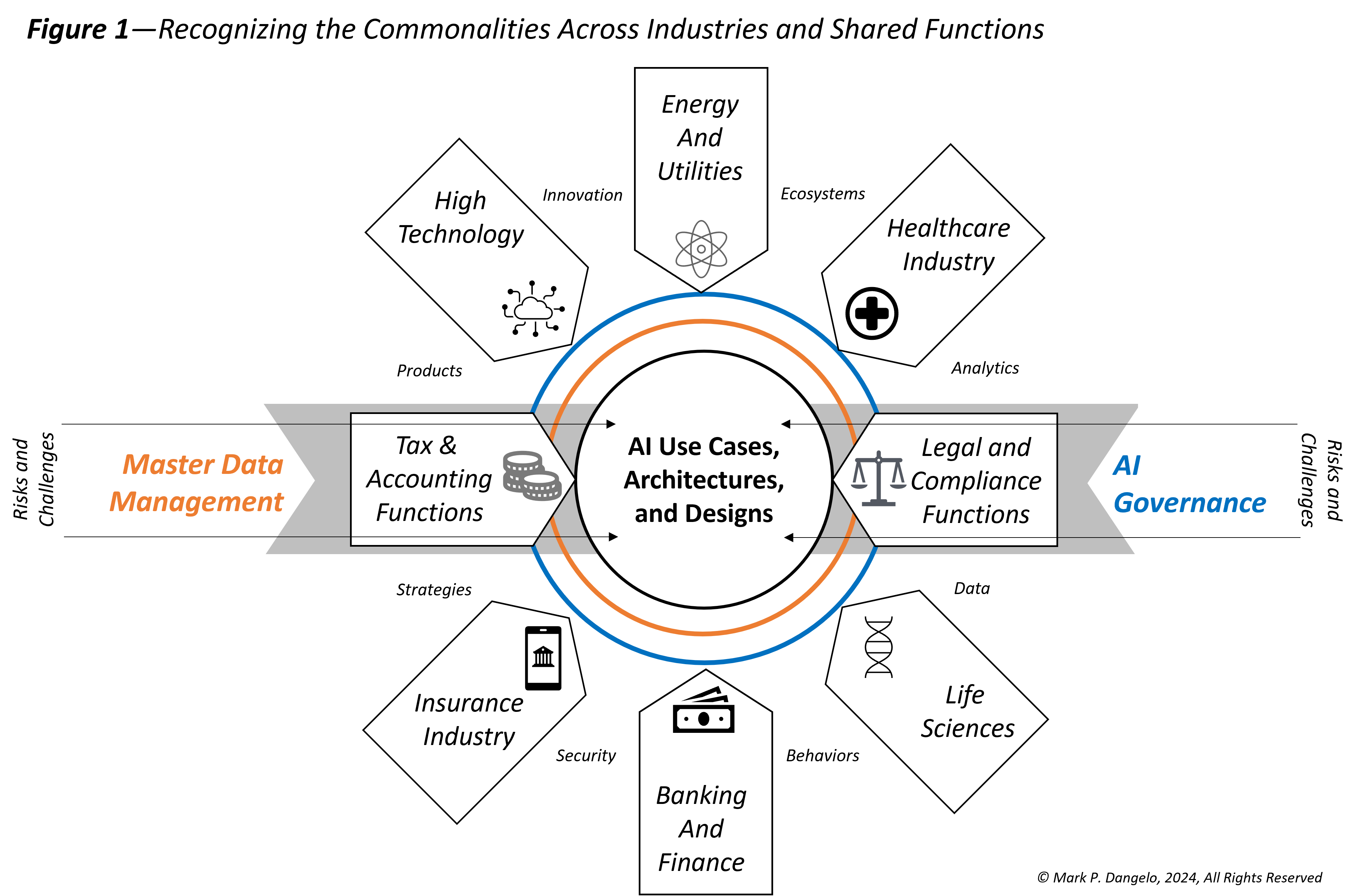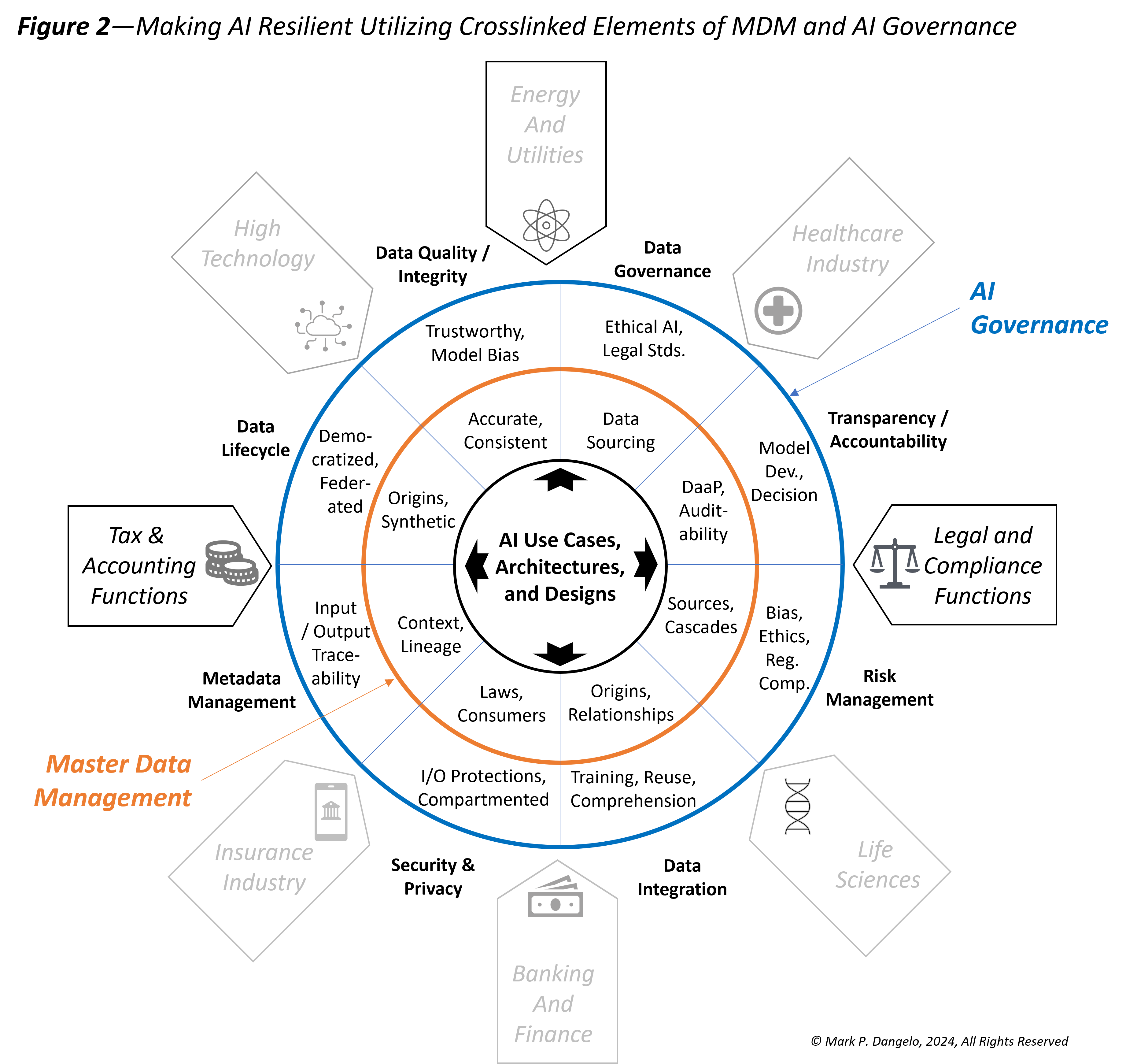For business leaders seeking to get ahead of the AI adoption curves, MDM and AI governance represent a foundation that can level the competitive fields without requiring traditionally significant investments in capabilities that often took years to realize
Across industries and their shared functions, the quest for everything AI continues to expand, fueled by firms with trillion-dollar market valuations and startups that showcase seemingly improbable use cases. The chaos and uncertainty of artificial intelligence (AI) is altering the corporate 2025-‘26 planning and budgeting cycles as 2023-‘24 solutions are already undergoing material alterations and sunsetting discussions.
As performance measures — usually around customer service, efficiency, and differentiation — generally show positive results, the AI pace of change and technological advancements threaten early-solution obsolescence. Whereas AI increasingly is the answer for corporate challenges and impacts, business leaders are now understanding that AI technology is not the end-state — it’s just the enabler.
Moreover, while generative AI (GenAI) dominates the discussions and solutions, enterprise implementations also understand that large solutions, such as large language models (LLMs), are expensive to develop and maintain, often requiring vast skills, data sources, and organizational change, which in some cases aren’t analogous to prior application frameworks. Finally, data relevancy and resiliency are foundational building blocks for intelligent decision-making that should not be sourced from outside the enterprise due to privacy, security, ethics, and accuracy concerns.
So, what should business leaders be considering when reviewing the growing, complex capabilities and transitory forms which comprise today’s AI? As AI commercial solutions are measured in weeks and months, what steady-state, foundational functions provide sustainable returns during AI’s many iterations? What is missing? And what will aid leaders with their AI implementation requirements?
To understand and answer these questions, let’s review the common failure points surrounding current AI implementations, their challenges, and impacts.

When analyzed, this chart highlights two fundamental enterprise core competencies that need to be implemented: Master data management (MDM) and AI governance. To date, these two functions have been done piecemeal as a by-product as firms rushed into AI deployment. However, as AI rapidly evolves, data-centric applications like AI require robust governance and oversight, which will be achieved using MDM and AI governance.
MDM represents a robust software solution that is critical for managing vast data sources across multi-modal AI applications, while ensuring data consistency, accuracy, and accountability across business data sources. For enterprises now thinking about smaller and more diverse AI technologies (or compartmentalized solutions that interact with other AI solutions), MDM represents a critical building block, which addresses the common failure points. Additionally, MDM provides automation for data oversight, ingestion, and governance that is critical to every AI onboarding, learning, and expansion effort.
The second core competency of AI governance represents the application of a data-centric approach for AI solutions. AI governance uses a common source of data that facilitates rapid-cycle technology iteration ensuring accuracy, consistency, and adaptation regardless of industry or common organizational functions. The implications of AI governance as an AI solution become increasingly specialized and iterative, and it resides in the consistent application of cross-department, divisional, and functional data.
To illustrate these increasingly common competencies of MDM and AI governance, Figure 1 conceptually shows that regardless of industry or function (such as audit, legal, or compliance) at the core of future, smaller, and targeted AI solutions resides these two competencies.

With business leaders and technology providers demanding and delivering granular AI use cases, the infrastructure and architecture that represents AI designs must be proactively constructed. The previous applications that processed surrounding data in isolation is too fragmented, complex, and of inferior quality for current AI solutions.
To showcase why MDM and AI governance are truly foundational for the smaller, iterative AI solutions that coming in 2025-‘26, Figure 2 further breaks down these evolving competencies and their capabilities. MDM and AI governance represent for AI a common architectural approach that offers data-centric deployment, data relevance, and resiliency that are lacking within current intelligent solutions. As the AI solutions grow more robust and industry-specific — much like traditional application designs before the explosion of AI capabilities — the building blocks for cost-effective and linked intelligent software requires data-centric infrastructures.

The graphic above represents the roadmap for the incorporation of business models and requirements beyond the current trends of chasing the technology. Many leaders fear they are being left behind by their competitors if they are not talking and implementing AI (such as FOMO, or fear of missing out). Yet without the design and implementation of MDM and AI governance as part of a robust, future-proof AI portfolio, enterprises will continue to experience the common failure points cited above.
For business leaders, MDM and AI governance provide the framework for common AI solutions regardless of technological specifics. As AI moves to smaller, more cost-effective designs, the data foundations and their active management will be critical to advancing AI technologies. A simplified sequence of high-level steps to implement MDM and AI might include:
-
-
- Phase 1: Assessing and planning of the data environment against the AI requirements, including measurements and priorities.
- Phase 2: Implementing data governance frameworks, including policies, procedures, standards, and more.
- Phase 3: Automating data ingestion, integration, and quality across systems and sources that incorporates catalogs, dashboards, and platforms.
- Phase 4: Building common use cases and reusable isolation modules that ensure quality, consistency, and context.
- Phase 5: Training, assessing, and gathering feedback while including future designs and requirements as AI and business needs expand.
-
In summary, MDM and AI governance have often been viewed as isolated or esoteric architectural elements that only large enterprises required. However, with advancements in hardware and software, MDM and AI governance have become more intuitive and cost effective as building blocks for rapid-cycle AI solutions.
For business leaders seeking to get ahead of the AI adoption curves, MDM and AI governance represent a foundation that can level the competitive fields without requiring traditionally significant investments in capabilities that often took years to realize. As the strategy, planning and budget cycles come into focus for the next two years, AI experience from recent pilots and prototypes are driving MDM and AI governance adoption to eliminate fragmentation and inflated costs of operation and maintenance.
Using the post-implementation assessments and opportunities surrounding current AI, leadership can understand that their AI needs are common across industry and functions. However, the implication of smaller AI is that MDM and AI governance are core competencies necessary to continually adapt to the technological progressions that surround expanding intelligent solutions.
You can access more by this author about how organizations can approach AI and technology infrastructure, here







